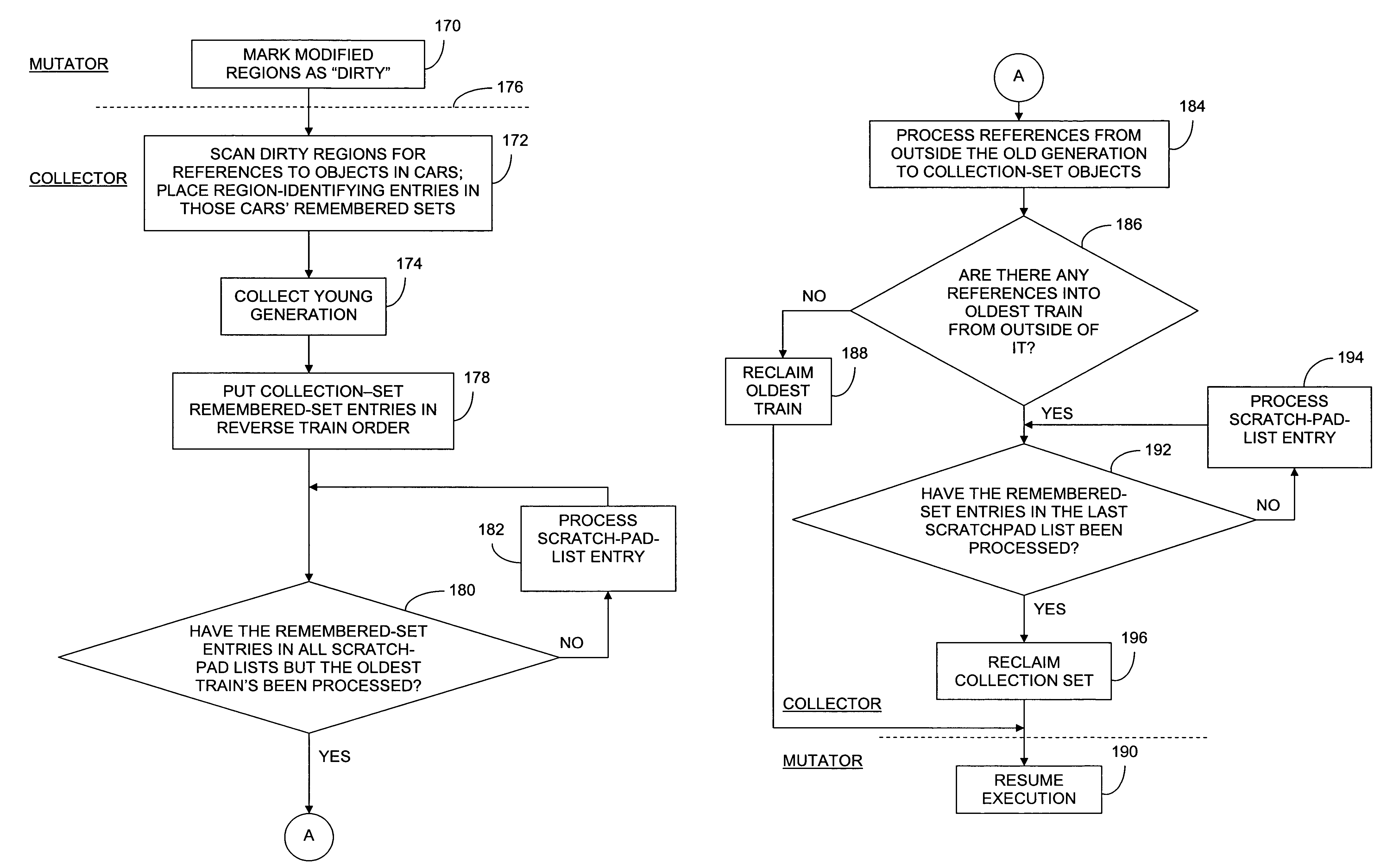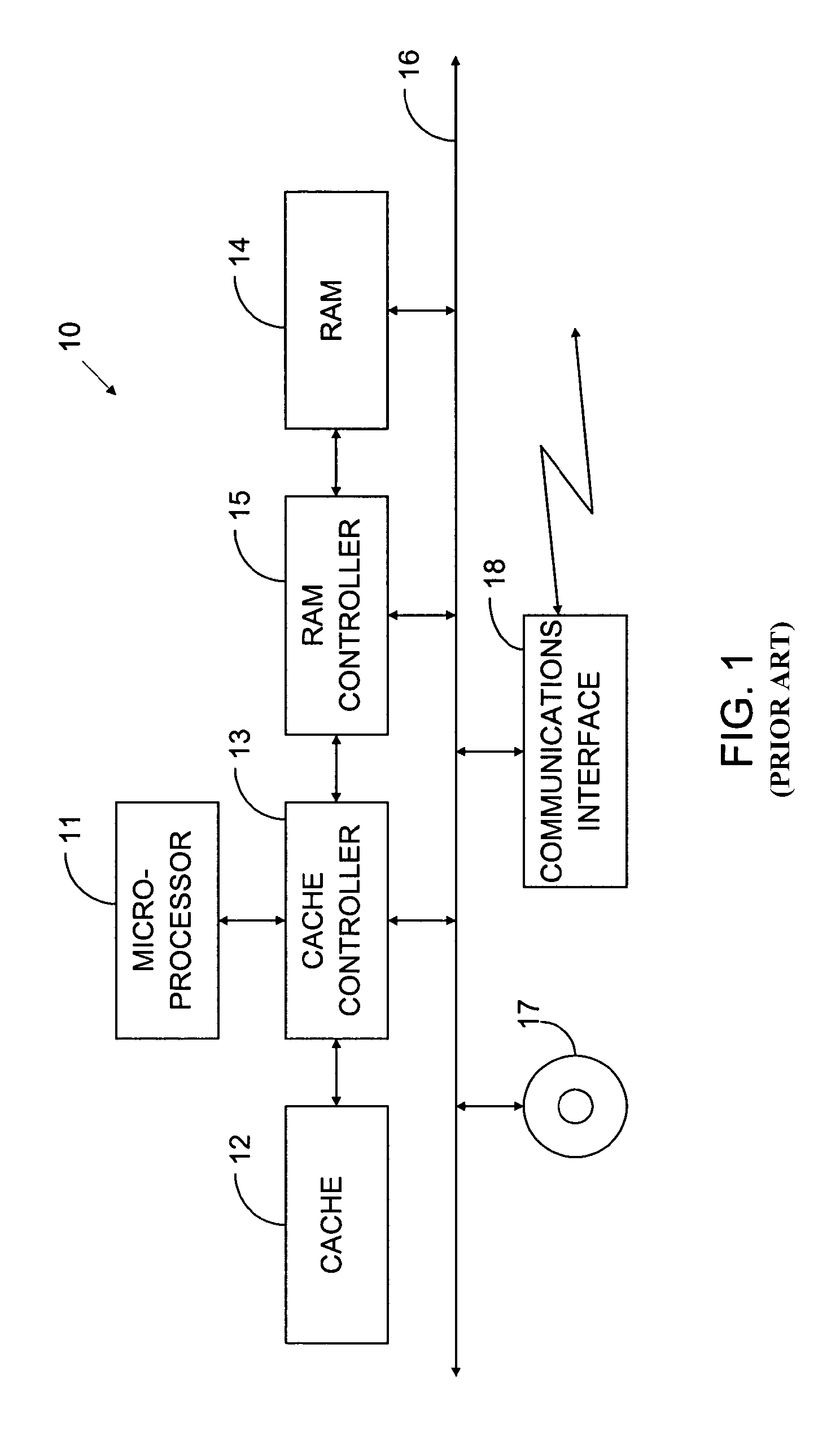Using class properties to segregate objects in a generation managed by the train algorithm
a class property and object technology, applied in the field of memory management, can solve the problems of increasing the memory requirements of the system, the difficulty of restricting storage requirements to the available memory space, and the effort expended in allocating memory to data objects, so as to reduce the amount of floating garbage, reduce the memory load that remembered sets impose, and reduce the effect of overhead and related drawbacks
- Summary
- Abstract
- Description
- Claims
- Application Information
AI Technical Summary
Benefits of technology
Problems solved by technology
Method used
Image
Examples
Embodiment Construction
[0116]As was just mentioned, the present invention involves dividing classes into class groups, associating at least some car sections with respective ones of such groups, and placing into each such car section only instances of classes in the associated group. This concept is broadly applicable to the train algorithm as described above. For the sake of example, though, the invention will now be described by reference to an embodiment that is similar to that described above but differs in some details.
[0117]Whereas it was tacitly assumed above, for example, that only a single car section would be collected in any given collection interval, the embodiment now to be discussed may collect more than a single car during a collection interval. FIGS. 13A and 13B (together, “FIG. 13”) therefore depict a collection operation that is similar to the one that FIG. 8 depicts, but FIG. 13 reflects the possibility of multiple-car collection sets and depicts certain optimizations that some of the i...
PUM
 Login to View More
Login to View More Abstract
Description
Claims
Application Information
 Login to View More
Login to View More - R&D
- Intellectual Property
- Life Sciences
- Materials
- Tech Scout
- Unparalleled Data Quality
- Higher Quality Content
- 60% Fewer Hallucinations
Browse by: Latest US Patents, China's latest patents, Technical Efficacy Thesaurus, Application Domain, Technology Topic, Popular Technical Reports.
© 2025 PatSnap. All rights reserved.Legal|Privacy policy|Modern Slavery Act Transparency Statement|Sitemap|About US| Contact US: help@patsnap.com



